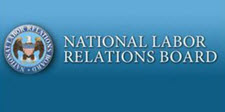President Trump yesterday said he will sign a formal order next week imposing tariffs of 25 percent on imported steel and 10 percent on aluminum for “a long period of time” – an act that could raise domestic construction costs and create new challenges for real estate development and infrastructure projects. (White House Remarks, March 1)
 |
President Trump yesterday said he will sign a formal order next week imposing tariffs of 25 percent on imported steel and 10 percent on aluminum. |
Roundtable President and CEO Jeffrey DeBoer voiced concern about how such a broad international penalty could rebound against the domestic commercial real estate industry. “In the United States, forty-two percent of steel is consumed by the construction industry, which employs millions of Americans directly and millions more indirectly,” said DeBoer. “Aluminum is also a key material used in energy efficient building construction. The current healthy state of the U.S. commercial real estate industry could be hard hit with the unintended consequences from such broad penalties targeting metals essential to construction. Tariffs will lead to higher construction costs that make many new projects simply uneconomic and unviable — hurting investment and job creation,” DeBoer noted.
Trump’s announcement, made during a White House meeting with U.S. metals industry executives, sparked a bout of stock market volatility and immediate responses from Canada and the European Union promising “countermeasures” to “rebalance” international trade with the U.S.
Federal Reserve Chairman Jerome Powell, following testimony this week before the House and Senate, said, “The best approach is to deal directly with the people who are affected, rather than falling back on tariffs.” (Wall Street Journal, March 1)
According to an analysis by the Cato Institute, more than 200 anti-dumping and countervailing duty orders aimed at preventing unfair competition currently constrain U.S. imports of steel and iron products from a long list of countries. The effect has been an increase in U.S. prices well above global levels to the detriment of the large manufacturing and construction sectors in America that use steel to make higher-value products. (CATO Institute, CNN Commentary, Aug. 2, 2017 and Engineering News-Record, Feb. 22, 2018)
The impact of tariff penalties on President Trump’s recent infrastructure proposal are uncertain. Transportation Secretary Elaine Chao yesterday testified before a Senate committee about the Administration’s infrastructure plan, which emphasizes policies to lower project costs and reduce project delays. Higher tariffs on steel – a material necessary to build and repair bridges, tunnels, pipelines, and rail lines – could further constrain the federal state, local and private funding sources touted by the Administration as necessary to finance U.S. infrastructure repair and modernization. (Bloomberg, March 1)
Infrastructure and national policies affecting economic growth will be discussed during The Roundtable’s Spring Meeting on April 25 in Washington, DC.
A conflict of interest by a newly-appointed member of The National Labor Relations Board (NLRB) prompted the agency on Monday to restore a 2015 ruling that renders employers vulnerable to claims by “indirect” workers who are not immediate hires – a move with significant implications that again subjects hotels, other franchise-model businesses, and companies that hire contractors to an expansive “joint employer” liability standard.
 |
With Browning-Ferris revived, an expanded, vague test – based on “indirect ” and “ potential ” control over workers’ terms and conditions of employment – will replace a more predictable and clear “direct and immediate control” standard for determining joint employer liability. |
Last December, the NLRB issued its decision in Hy-Brand Industrial Contractors, Ltd. , which overturned the Obama-era “joint employer” standard announced in Browning-Ferris Industries of California, Inc. (Roundtable Weekly, Dec. 15, 2017) With Hy-Brand now vacated – because the board’s inspector general recommended that a Trump appointee who previously worked for a law firm that represented one of the companies in Browning-Ferris should have recused himself – the 2015 decision is back in effect.
The withdrawal of Hy-Brand creates an uncertain and complicated legal landscape for ongoing franchise-related cases. (New York Times, Feb. 26)
With Browning-Ferris revived, an expanded, vague test – based on “indirect” and “potential” control over workers’ terms and conditions of employment – will replace a more predictable and clear “direct and immediate control” standard for determining joint employer liability. The decision exposes a broad range of contractors and subcontractors, and franchisors and franchisees, to workplace liability for another employer’s actions and a potential obligation to collectively bargain with workers they have not directly hired. (Wall Street Journal, Dec. 14.)
As the NLRB’s action vacating Hy-Brand demonstrates, congressional action could definitively address the joint employer standard and insulate the issue from whichever party has enough appointees to swing the majority on the highly politicized labor board. The House of Representatives in November 2017 passed the Save Local Business Act (H.R. 3441), which would codify the “direct and immediate control” standard when deeming employers liable for workplace violations.
A multi-industry coalition, including The Real Estate Roundtable, on Feb. 15 wrote Senate leaders urging them to take up H.R. 3441 as soon as possible to provide certainty for small business owners and other employers in all industries, while clarifying protections for American workers.
The multi-industry Visit U.S. Coalition (which includes The Real Estate Roundtable) on Wednesday released its policy agenda aimed at promoting and increasing inbound international travel to the United States. (VisitU.S.Policy Agenda, Feb. 28)
 |
The multi-industry Visit U.S. Coalition (which includes The Real Estate Roundtable) on Wednesday released its policy agenda aimed at promoting and increasing inbound international travel to the United States. ( VisitU.S. Policy Agenda , Feb. 28) |
The coalition advocates for policies that urge the Trump Administration and Congress to regain the nation’s lost share of the global travel market by 2020, which will result in 88 million international visitors who directly support 1.3 million U.S. jobs and $294 billion in travel exports – crucial to achieving the Administration’s economic goals. (Roundtable Weekly, Jan. 19 and Feb. 9)
"Robust international travel helps to power the U.S. commercial real estate markets, not only hospitality properties but retail, attraction, health and investment properties as well,” said Jeffrey D. DeBoer, President and CEO of The Real Estate Roundtable. "We look forward to continuing to work to emphasize that America is a uniquely welcoming, interesting and safe travel destination for international visitors. Positive national tourism policies boost overall economic growth, support and create jobs, generate revenues to help modernize our infrastructure, and generally improve the quality of life in our communities,” DeBoer added.
The coalition aims to safely and securely welcome more overseas travelers to the U.S. – who stay an average of 18 nights and spend approximately $4,360 at hotels, stores, restaurants and attraction properties on business and leisure trips. The coalition’s agenda encourages federal policy makers to:
- Embrace International Travel to the U.S. as a National Priority
- Expand Intelligence Sharing and Streamline the Travel Entry Process
- Make America’s Visa System More Secure and Accessible to International Travelers
- Increase Security and Efficiency in America’s Travel Screening Systems at U.S Ports of Entry
Led by the U.S. Travel Association and the American Hotel and Lodging Association, the coalition also includes the U.S. Chamber of Commerce and the American Resort Development Association.